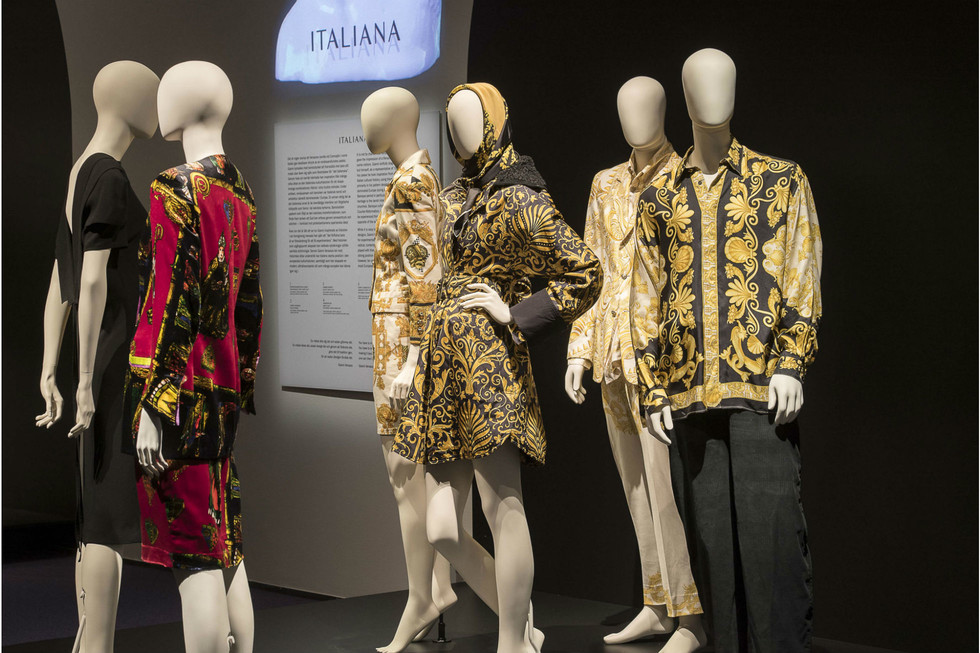ART IN FASHION: AN INTELLECTUAL EXPLORATION OF THE SELF
Written by Ksenia RundinThe curator of the fashion section at Antwerp 93, Linda Loppa stated once about avant-garde designers, “We do not just make clothes.” She meant that avant-garde fashion designers looked at other creative disciplines and their aim was to show the ideas behind the collections. As a teacher at the Fashion Department of the Royal Academy of Fine Arts, Linda Loppa thought of fashion designers as “trendsetters, almost artists, because they approach research similarly as well as translate influences from outside their creation” (Rossels, 1993, p. 25). Meanwhile, the art historian Meyer Shapiro in his essay The Liberating Quality of Avant-Garde Art (1957) stated that the artist’s power of creation, when it concerns art affected by “the tase of industry, technology and science”, seems analogous to the designer’s and engineer’s.
In the exhibition Art in Fashion at Sven-Harry's art museum, the curator Cay Bond merges together the ideas expressed by Loppa and Shapiro into a new contemporary context, exposing a new dimension of avant-garde fashion. The exhibition introduces unique pieces of Nikoline Liv Andersen, BITE, Martin Bergström, Ann Bonander Looft, Selam Fessahaye, Mark Kenly Domino Tan, Linda Nurk, Astrid Ohlson, Diana Orving, Stina Randestad, Olivier Saillard, Bea Szenfeld, Henrik Vibskov och Wilhja.
From being a product of creative resistance, seeking to recover the ideological approach of historical Avant-gardes, the objects presented in the exhibition reveal something that has, in my view, often been concealed — the idea of self. While observing the objects, one could feel own participation in the storytelling each object implicates, like a continuation of the artist idea through the viewer’s own imagination. The outcome is an unusual presence of fashion at the emotional level, bestowing a broader understanding of the essence of fashion than the limited possibilities that a museum could provide. What is the most amazing is that such effect is achieved with no application of any digital devices but merely imagination and the exhibited pieces, reaffirmed by the beholder and thus brought closer to the latter.
Meyer Shapiro also claimed that paintings and sculptures are the last handmade, personal objects within our culture, because almost everything else is produced industrially, leaving few people “fortunate enough to make something that represents themselves, that issues entirely from their hands and mind, and to which they can affix their names”. Cay Bond seems to have a solution to that by making the audience affix their feelings and emotions to the fashion objects and experience the exhibited designers' ideas as own intellectual solution.
Odalisque Magazine had an opportunity to ask Cay Bond some questions about the exhibition.
How did the idea to create this exhibition evolve?
I got the request from the museum to suggest a fashion exhibition suitable for Sven Harrys artmuseum. I suggested ART IN FASHION and some fashion designers working with that state of mind.
Why Avant-garde?
Art is often in itself avant-garde as it is created here and now and often leading to something else. In this exhibition I have gathered fashion artists who are experimenting, innovating and creating new conscious attitudes.
What made you choose these particular fashion designers?
As an analyst, my profession, I follow all cultural movements in society, art and fashion is only two of them. I’m fond of lifting talents especially in Sweden as we have a poor insight and respect for fashion creators compared to France and Italy. Historically we have a severe mass-market situation in the nordic countries and no real fashion culture. Although Denmark has become a visible fashion design market with a famous catwalk in Copenhagen linked to a conscious forum Copenhagen Fashion Summit.
Fashion is not art but fashion can be a form of art. The passion of creating fashion is an international phenomenon especially as it characterize different cultures and traditions. With the creator in focus who has a lot to tell through his or her artistique craft, talent and education. My intention with this exhibition is to show how these talented individual artists are inspired by both contemporary and historical art expressions. Mind you it has always been relevant to follow your time through various arts and crafts. 1920 ́s for example when you lived the artistic community, England, France, USA, Italy there were no barriers, it was a give and take. And look what came out of it! Modernity!
As a spectator of today you have to ask yourself, what you see and what you with yourself and your personal intellect can get out of it.
What does the choice of exhibition space add to the exhibition as such?
I find this space (Sven-Harry's art museum) architecturally is the perfect contemporary frame (Gert Wingårdh) for this innovative fashion scene ART IN FASHION.
What do you think contemporary art could learn from fashion today? And the other way around, what could fashion ”borrow” from contemporary art? And why?
Contemporary art will probably notice the respect for environment in creating new materials in fashion could be inspiring and more fashion designers will realise that uniqueness and artistry is a great inspiration for a new look! Among probably many other influences.





































